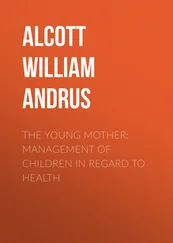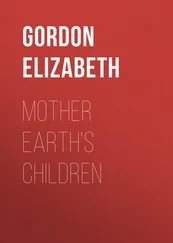Charles West - The Mother's Manual of Children's Diseases
Здесь есть возможность читать онлайн «Charles West - The Mother's Manual of Children's Diseases» — ознакомительный отрывок электронной книги совершенно бесплатно, а после прочтения отрывка купить полную версию. В некоторых случаях можно слушать аудио, скачать через торрент в формате fb2 и присутствует краткое содержание. Издательство: Иностранный паблик, Жанр: Руководства, Медицина, foreign_desc, на английском языке. Описание произведения, (предисловие) а так же отзывы посетителей доступны на портале библиотеки ЛибКат.
- Название:The Mother's Manual of Children's Diseases
- Автор:
- Издательство:Иностранный паблик
- Жанр:
- Год:неизвестен
- ISBN:нет данных
- Рейтинг книги:5 / 5. Голосов: 1
-
Избранное:Добавить в избранное
- Отзывы:
-
Ваша оценка:
- 100
- 1
- 2
- 3
- 4
- 5
The Mother's Manual of Children's Diseases: краткое содержание, описание и аннотация
Предлагаем к чтению аннотацию, описание, краткое содержание или предисловие (зависит от того, что написал сам автор книги «The Mother's Manual of Children's Diseases»). Если вы не нашли необходимую информацию о книге — напишите в комментариях, мы постараемся отыскать её.
The Mother's Manual of Children's Diseases — читать онлайн ознакомительный отрывок
Ниже представлен текст книги, разбитый по страницам. Система сохранения места последней прочитанной страницы, позволяет с удобством читать онлайн бесплатно книгу «The Mother's Manual of Children's Diseases», без необходимости каждый раз заново искать на чём Вы остановились. Поставьте закладку, и сможете в любой момент перейти на страницу, на которой закончили чтение.
Интервал:
Закладка:
The signs of disease at all ages may be referred to one or other of three great classes: disorder of function, alteration of temperature, complaint of pain.
In the infant it is the last of these which very often calls attention to the illness from which it is suffering. Cries are the only language which a young baby has to express its distress; as smiles and laughter and merry antics tell without a word its gladness. The baby must be ill, is all that its cries tell one person; another, who has seen much of sick children, will gather from them more, and will be able to judge whether its suffering is in the head, or chest, or stomach. The cries of a baby with stomach-ache are long and loud and passionate; it sheds a profusion of tears; now stops for a moment, and then begins again, drawing up its legs to its stomach; and as the pain passes off, stretches them out again, and with many little sobs passes off into a quiet sleep. If it has inflammation of the chest it does not cry aloud, it sheds no tears, but every few minutes, especially after drawing a deeper breath than before, or after each short hacking cough, it gives a little cry, which it checks apparently before it is half finished; and this, either because it has no breath to waste in cries, or because the effort makes its breathing more painful. If disease is going on in the head, the child utters sharp piercing shrieks, and then between whiles a low moan or wail, or perhaps no sound at all, but lies quiet, apparently dozing, till pain wakes it up again.
It is not, however, by the cry alone, or by any one sign of disease, that it is possible to judge either of its nature or of its degree, but the mention of this serves merely as an illustration, which anyone can understand, of the different meanings that even a baby's cry will convey to different persons.
When a child is taken ill, be the disease from which it is about to suffer what it may, there is at once a change from its condition when in health, such as soon attracts the attention even of the least observant. The child loses its appetite, is fretful and soon tired, and either very sleepy or very restless, while most likely it is thirsty, and its skin hotter than natural. In many instances, too, it feels sick or actually vomits, while its bowels are either much purged or very bound. If old enough to talk, it generally complains of feeling ill, or says that it has pain in some part or other, though it is by no means certain that a little child has described rightly the seat of its pain; for it very often says that its head aches or that its stomach aches, just because it has heard people when ill complain of pain in the head or in the stomach. Some of these signs of illness are, of course, absent in the infant, who can describe its feelings even by signs imperfectly; but the baby loses its merry laugh and its cheerful look; it ceases to watch its mother's or its nurse's eye as it was used to do, though it clings to her more closely than ever, and will not be out of her arms even for a moment; and if at length rocked to sleep in her lap, will yet wake up and cry immediately on being placed in its cot again.
Symptoms such as these are sure to awaken the mother's attention to her child, and the child's welfare and the parent's happiness alike depend, in many instances, on the way in which she sets about to answer the question, 'What is the matter?'
Some mothers send at once to the doctor whenever they see or fancy that anything ails their child. But this way of getting rid of responsibility is not always possible, nor, indeed, on moral grounds, is it always desirable, for the mother who delegates each unpleasant duty to another, whether nurse, governess, or doctor, in order to save herself trouble or anxiety, performs but half a mother's part, and can expect but half a mother's recompense of love.
Whenever a child is unwell, a mother may do much to ascertain what is the matter, and may by the exercise of a little patience and common sense save herself much needless heart-ache, and her child much suffering.
The first point to ascertain is the presence or absence of fever; that is to say, whether, and how much, the temperature of the body is higher than natural. If the temperature is not higher than natural, it may be taken as almost certain that the child neither has any inflammatory affection of the chest, nor is about to suffer from any of the eruptive fevers. The temperature, however, cannot be judged of merely by the sensation conveyed to the hand, but must be ascertained by means of the thermometer. 4 4 The thermometer used for this purpose, called a clinical thermometer, may be bought for about twelve shillings, of any chemist or instrument-maker, and its mode of employment can be learned in five minutes. No mother should be without it.
In the case of the grown person the thermometer is placed either under the tongue, the lips being closed over it, or in the armpit, and is kept there five or six minutes. In young children, however, neither of these is practicable, and I prefer to place the instrument in the groin, and crossing one leg over the other, to maintain the thermometer there for the requisite five minutes. The temperature of the body in health is about 98.5° Fahr. in the grown person, and very slightly higher in childhood; but any heat above 99.5° may be regarded as evidence that something is wrong, and the persistence for more than twenty-four hours of a temperature of 101° and upwards, may be taken as almost conclusive proof of the existence of some serious inflammation, or of the onset of one of the eruptive fevers.
At the same time it is well to bear in mind that temporary causes, such as especially the disorders produced by over-fatigue, or by an over-hearty or indigestible meal, may suddenly raise the temperature as high as 102°, or higher, but the needed repose or the action of a purgative may be followed in a few hours by an almost equally sudden decline of the heat to the natural standard.
It is well to learn to count the pulse and the frequency of the breathing; but to do the former accurately, requires practice such as is hardly gained except by hospital training; and indeed, with few exceptions, the value of the information furnished by the pulse is less in the child than in the adult. The reasons for this are obvious, since the rapidity of the circulation varies under the slightest causes, and the very constraint of holding the sick child's hand makes it struggle, and its efforts raise the frequency of the heart-beats by ten or twenty in the minute. The place at which to seek the beat of the pulse is at the wrist, just inside and below the protuberance of the wrist-bone; but if the child is very fat it is often difficult to detect it. When detected it is not easy to count it in early infancy, for during the first year of life the heart beats between 120 and 130 in the minute, diminishing between that age and five years to 100, and gradually sinking to 90 at twelve years old. In proportion, moreover, to the tender age of the child, is the rapidity of its circulation apt to vary under the influence of slight causes, while both its frequency and that of the breathing are about a third less during sleep than in the waking state.
The frequency of the breathing is less difficult to ascertain, while at the same time it furnishes more reliable information than the pulse. This is best tested when the child is asleep, remembering always that the breathing is then slower than in the waking state. The open hand, well warmed, should be laid flat and gently over the child's night-dress on the lower part of the chest and the pit of the stomach. Each heaving of the chest, which marks a fresh breath being taken, may be counted, and the information thus obtained is very valuable. Up to the age of two years the child breathes from 30 to 40 times in a minute, and this frequency gradually declines to from 25 to 30 till the age of twelve, and then settles down to from 20 to 25 as in the grown person. You would thus know that a sleeping infant who was breathing more than 30 times, or a child of five who breathes more than 25 times, has some ailment in its chest, and that the doctor should be sent for in order to ascertain its exact nature.
Читать дальшеИнтервал:
Закладка:
Похожие книги на «The Mother's Manual of Children's Diseases»
Представляем Вашему вниманию похожие книги на «The Mother's Manual of Children's Diseases» списком для выбора. Мы отобрали схожую по названию и смыслу литературу в надежде предоставить читателям больше вариантов отыскать новые, интересные, ещё непрочитанные произведения.
Обсуждение, отзывы о книге «The Mother's Manual of Children's Diseases» и просто собственные мнения читателей. Оставьте ваши комментарии, напишите, что Вы думаете о произведении, его смысле или главных героях. Укажите что конкретно понравилось, а что нет, и почему Вы так считаете.











